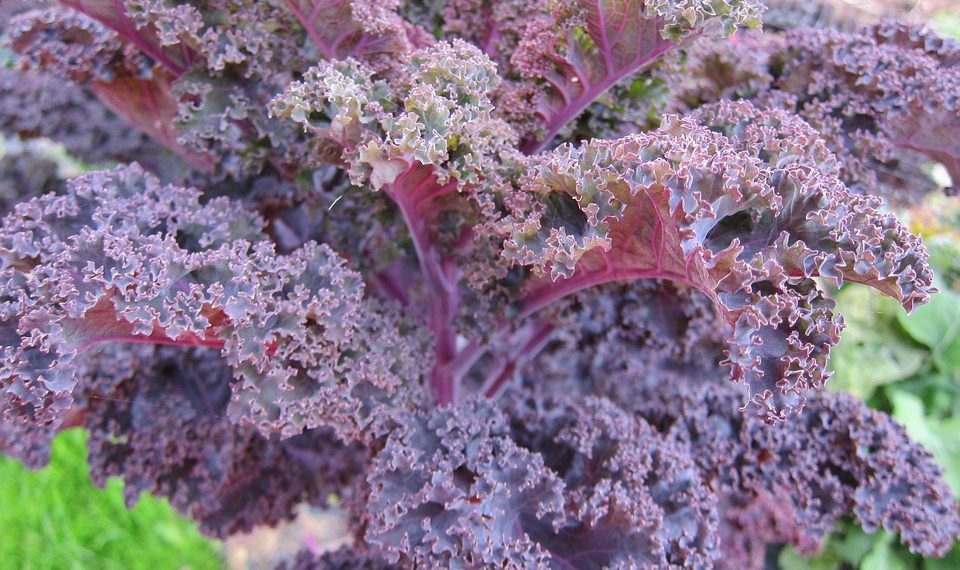Ever tried to lift weights after a long day? The pump feels great, but later, that initial energy can fade. Your muscles might not be recovering as fast as you’d like, leaving you wondering how to optimize your post-exercise routine. Enter kale—this leafy green is often hailed as a superfood, but when it comes to muscle health, what’s the real deal? Here are ten reasons why kale deserves a spot on your plate if you’re keen on building and maintaining muscle health.
Contents
- 1. Nutrient Density: A Powerhouse for Performance
- 2. Rich in Antioxidants: Combatting Oxidative Stress
- 3. Anti-Inflammatory Properties
- 4. High Fiber Content: Satisfying and Supporting Digestive Health
- 5. Plant-Based Protein Source
- 6. Hydration: Keeping Muscles Functioning Optimally
- 7. Calcium for Stronger Muscles
- 8. Alkalizing Effects: Balance Your Body
- 9. Versatility in Culinary Uses
- 10. Cost-Effective and Accessible
1. Nutrient Density: A Powerhouse for Performance
Kale is an impressive source of essential vitamins and minerals, including vitamins A, C, and K, as well as calcium, magnesium, and iron. These nutrients play crucial roles in muscle function and recovery. For example, vitamin K is vital for maintaining bone health, while magnesium supports muscle contraction and relaxation (Fenton & Voss, 2019).
Moreover, kale’s high vitamin C content aids in collagen synthesis, which is important for muscle tissue repair and overall recovery post-exercise. This means that, by incorporating kale into your diet, you’re not just filling your plate with greens; you’re fueling your muscle recovery.
2. Rich in Antioxidants: Combatting Oxidative Stress
Post-exercise, your muscles can experience oxidative stress, leading to fatigue and delayed recovery. Kale contains potent antioxidants, such as quercetin and kaempferol, which help combat oxidative damage (Huang et al., 2017).
In a study published in the International Journal of Molecular Sciences, researchers noted that the antioxidants found in kale can help mitigate inflammation and oxidative stress, potentially leading to faster muscle recovery. By choosing kale, you may be setting yourself up for more effective recovery after those tough workouts.
3. Anti-Inflammatory Properties
Chronic inflammation can hinder muscle recovery and growth. Kale comes packed with anti-inflammatory compounds that may aid in reducing inflammation. According to a study in the Journal of Nutritional Biochemistry, glucosinolates found in kale help lower the levels of pro-inflammatory markers in the body (Roh et al., 2021).
For anyone who experiences muscle soreness or stiffness post-exercise, incorporating kale into your meals can serve as a delicious addition to reduce inflammation naturally.
4. High Fiber Content: Satisfying and Supporting Digestive Health
You might not immediately think of muscle health when considering fiber, but it plays a significant role in overall wellness, including muscle recovery. Kale is a great source of dietary fiber, which supports digestive health and helps maintain stable blood sugar levels.
This stability means that your muscles receive a more consistent energy supply. In a study published in Nutrients, researchers found that dietary fiber positively affects muscle recovery by optimizing energy metabolism (Slavin, 2013). Plus, feeling satisfied after a meal can prevent you from reaching for unhealthy snacks that could derail your fitness goals.
5. Plant-Based Protein Source
Though not as high in protein as animal products, kale still provides a notable amount for a leafy green. In fact, it contains about 4 grams of protein per cup cooked, making it a suitable complementary protein source for muscle repair, especially for those following plant-based diets.
Research in Nutrition Reviews indicates that plant proteins, though different in amino acid composition, can still support muscle health and growth, particularly when combined with other protein sources (Pannala & Parizotto, 2021).
6. Hydration: Keeping Muscles Functioning Optimally
Hydration plays an essential role in muscle function, and kale’s high water content can help you maintain hydration levels, especially after a workout. Proper hydration is crucial for nutrient transport, temperature regulation, and muscle contraction.
Studies suggest that even mild dehydration can impair performance and increase the risk of injury. By adding kale to your post-workout smoothie or salad, you’re not just enjoying its unique flavor; you’re also boosting your hydration strategy.
7. Calcium for Stronger Muscles
Kale is a great plant-based source of calcium, a mineral that plays a vital role in muscle contraction and signaling. Sufficient calcium levels are crucial for muscle contraction during workouts and maintenance of overall muscle function.
Moreover, a study in the Journal of Nutrition found that higher calcium intake may lead to increased muscle mass in certain age groups (Tylavsky et al., 2014). Just a cup of cooked kale can provide about 6% of the recommended daily intake of calcium, making it a worthy addition for muscle enthusiasts.
8. Alkalizing Effects: Balance Your Body
Kale has an alkalizing effect on the body, which may help counteract the acidity created by high-protein diets often championed by bodybuilders. An excessively acidic environment can lead to various health issues, including impaired muscle recovery.
Research suggests that maintaining a balanced pH level can facilitate better muscle performance and recovery (Woolf et al., 2020). Whether you enjoy kale as a salad, smoothie, or cooked side, its alkalizing properties might just give you a slight edge in your quest for muscle health.
9. Versatility in Culinary Uses
Kale is far from a one-dimensional ingredient. You can enjoy it cooked, raw, blended, or dried. This versatility means it’s easy to incorporate into any meal, whether as a base for salads, blended into smoothies, or sautéed with garlic as a side dish.
Experimenting with recipes ensures you won’t get bored with your diet, an important factor for long-term adherence to healthy eating habits. Keeping meals interesting can boost your motivation to maintain a fitness-focused lifestyle.
10. Cost-Effective and Accessible
While some superfoods can be pricey and seasonal, kale is generally affordable and available year-round. This accessibility makes it easy for everyone to include it in their diets. The lower cost does not diminish its nutritional value; in fact, it underscores kale’s status as a staple for promoting muscle health without breaking the bank.
Incorporating kale into your meals doesn’t have to be an extravagant effort. Even simple additions like kale chips or tossing it into a stir-fry can contribute to a better muscle recovery strategy.
FAQs
1. Can I get all the nutrients I need for muscle health from kale alone?
While kale is nutrient-dense, it’s essential to have a balanced diet that includes a variety of foods for optimal muscle health. Incorporating other live proteins, grains, and healthy fats is advisable for meeting your overall nutrient needs.
2. How often should I include kale in my diet for muscle benefits?
Incorporating kale several times a week, whether in smoothies, salads, or cooked dishes, can effectively boost your nutrient intake and support muscle recovery.
3. Are there any downsides to consuming too much kale?
Eating kale in moderation is generally safe for most people. However, due to its high oxalate content, excessive consumption may lead to kidney stones in susceptible individuals. It’s prudent to balance kale with other leafy greens.
4. Is raw kale better for muscle health than cooked kale?
Both raw and cooked kale offer unique nutritional benefits. Cooking might reduce certain nutrients, but it can also enhance the bioavailability of others. Mixing both forms in your diet can provide the best results.
Conclusion
Kale stands as a nutrition powerhouse that can be a key ally in your journey toward muscle health. Its rich nutrient profile, antioxidant properties, and versatility make it not only a dietary option but a delicious choice that can help enhance your performance and recovery. Whether you’re pushing through personal bests or simply wanting to feel your best, consider elevating your meals with kale. It’s more than just a side; it’s your partner in muscle health.
References
- Fenton, J., & Voss, C. (2019). Nutritional aspects of Kale and its health benefits. Nutrition Research Reviews. URL: https://www.cambridge.org/core/journals/nutrition-research-reviews/article/nutritional-aspects-of-kale-and-its-health-benefits/
- Huang, G., Chen, Z., & Guo, L. (2017). Antioxidants in kale (Brassica oleracea var. sabellica). International Journal of Molecular Sciences. URL: https://www.mdpi.com/1422-0067/18/11/2533
- Roh, Y., Yoo, M., & Lee, J. (2021). Glucosinolates in cruciferous vegetables. Journal of Nutritional Biochemistry. URL: https://www.jnutbio.com/article/S0955-2863(20)30380-6/fulltext
- Slavin, J. (2013). Fiber and the prevention of chronic diseases. Nutrients. URL: https://www.ncbi.nlm.nih.gov/pmc/articles/PMC3701359/
- Pannala, A., & Parizotto, O. (2021). Plant protein and muscle health. Nutrition Reviews. URL: https://academic.oup.com/nutritionreviews/article/79/8/788/6012140
- Tylavsky, F., Butte, N., & Church, R. (2014). Calcium and muscle mass in children. The Journal of Nutrition. URL: https://academic.oup.com/jn/article/144/5/686/4581738
- Woolf, K., et al. (2020). Nutritional considerations for athletes. International Journal of Sport Nutrition and Exercise Metabolism. URL: https://journals.humankinetics.com/view/journals/ijsnem/30/1/article-p47.xml
Get Your FREE Natural Health Guide!
Subscribe now and receive our exclusive ebook packed with natural health tips, practical wellness advice, and easy lifestyle changes — delivered straight to your inbox.















